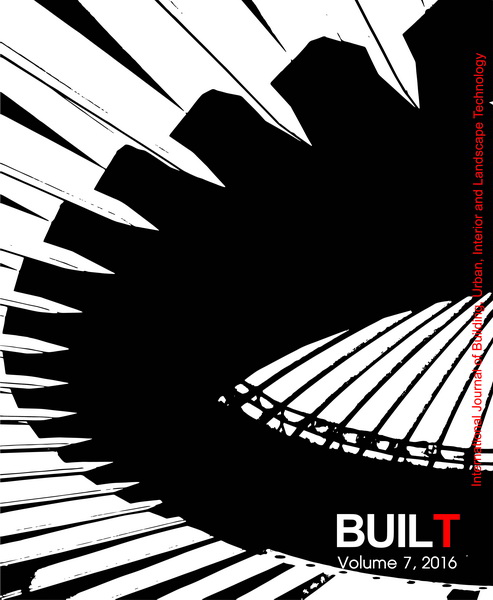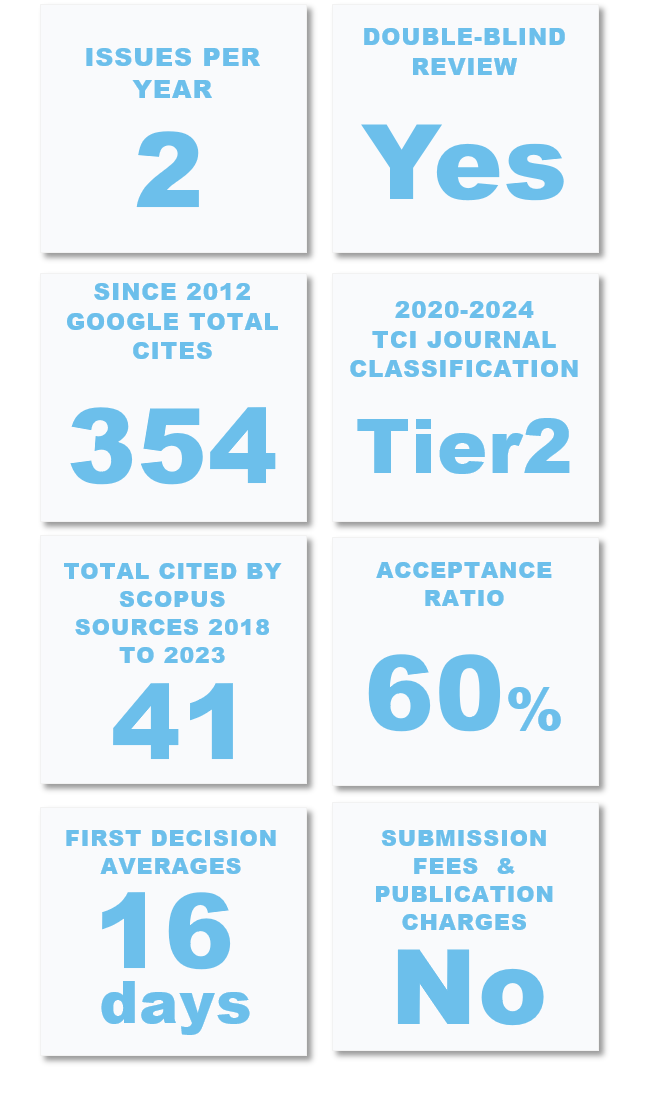ETFE: New Sustainable Material
Keywords:
ETFE foil cushions, Environment, Sustainable, Pneumatic structureAbstract
ETFE, a synthetic fluoropolymer, has been widely used in the construction industry for a few decades and is gaining more popularlity due to its versatility. This article aims to review the applications of ETFE foils in buildings as a sustainable construction material. According to literature reviews found that using of ETFE in construction can reduce the amount of raw material used, reduce building time, and reduce building costs. ETFE cushions also provide highly light-transmittance, less weight and more thermal insulation compared to glazed roofing. Examples of built projects and applications of ETFE foils are presented to show the potentials and challenges in order to improve the environmental performance of a building which may reduce the overall energy consumption.
Downloads
References
Chilton, J. C., Pezeshkzadeh, S. A. & Afrin, S. (2013). Effect of cushion geometry and configuration on the embodied energy of etfe foil construction. In VI International Conference Textile Composites and Inflatable Structures Structural. Munich, Germany.
Cremers, J. M. (2010). Textiles for insulation systems, control of solar gains and thermal losses and solar systems. Textiles, Polymers and Composites for Buildings. UK: Woodhead Publishing.
Hertzsch, E. & Lau, K. (2010). Textiles, polymers and composites for buildings: Challenges in using textile materials in architecture: The case of australia. UK: Woodhead publishing.
Hoe, F. (2009). Soft hard façade [Unpublished Report]. Subject: Façade Design and Performance. Faculty of Architecture, Building and Planning, The University of Melbourne, Australia.
Hu, J., Chen, W., Zhao, B. & Song, H. (2014). Experimental studies on summer performance and feasibility of a BIPV/T ethylene tetrafluoroethylene (ETFE) cushion structure system. Energy and Buildings, 69, 394-406.
Hu, J., Chen, W., Yang, D., Zhao, B., Song, H. & Ge, B. (2016). Energy performance of ETFE cushion roof integrated photovoltaic/thermal system on hot and cold days. Applied Energy, 173, 40-51.
International Energy Agency [IEA]. (2004). IEA Report IEA PVPS T7–4. France: Author.
Jeska, S. (2008). Transparent plastics - design and technology (394-406). Basel, Birkhäuser.
Le Cuyer, A. (2008). ETFE technology and design. Basel: Birkhäuser Verlag AG.
Maywald, C. & Riesser, F. (2016). Sustainability-The art of modern architecture. International Symposium on “Novel Structural Skins: Improving sustainability and efficiency through new structural textile materials and designs”. Procedia Engineering 155, 238 -248.
Monticelli, C. (2009). Characterization of the environmental performance of new building materials for architecture: The case of the ETFE Envelope Membranes. Report of the research, tutor A. Campioli, co-tutor A. Zanelli, Polytechnic of Milan Dept. BEST, May 2008 - April 2009.
Robinson, A. L. (2005). Structural opportunities of ETFE (ethylene tetra fluoro ethylene). Master thesis (M. Eng.), Massachusetts Institute of Technology, USA.
Robinson-Gayle, S, Kolokotroni, M., Cripps, A. & Tanno, S. (2001). ETFE foil cushions in roofs and atria. Construction and Building Materials, 15(7), 323-327.
Schiemann, L. & Moritz, K. (2010). Textiles, polymers and composites for buildings: Polymer foils used in construction. UK: Woodhead publishing.
Schier, J. (Ed.). (1997). Modern fluoropolymers: High performance polymers for diverse applications. Chichester: John Wiley & Sons.
Downloads
Published
How to Cite
Issue
Section
License

This work is licensed under a Creative Commons Attribution-NonCommercial-NoDerivatives 4.0 International License.












